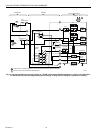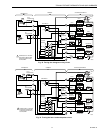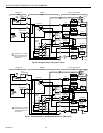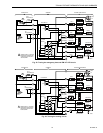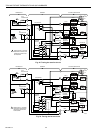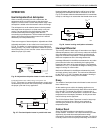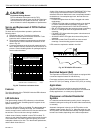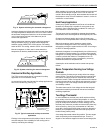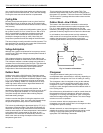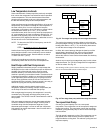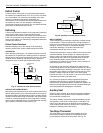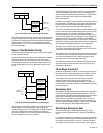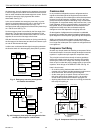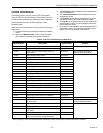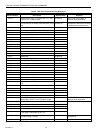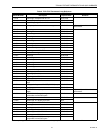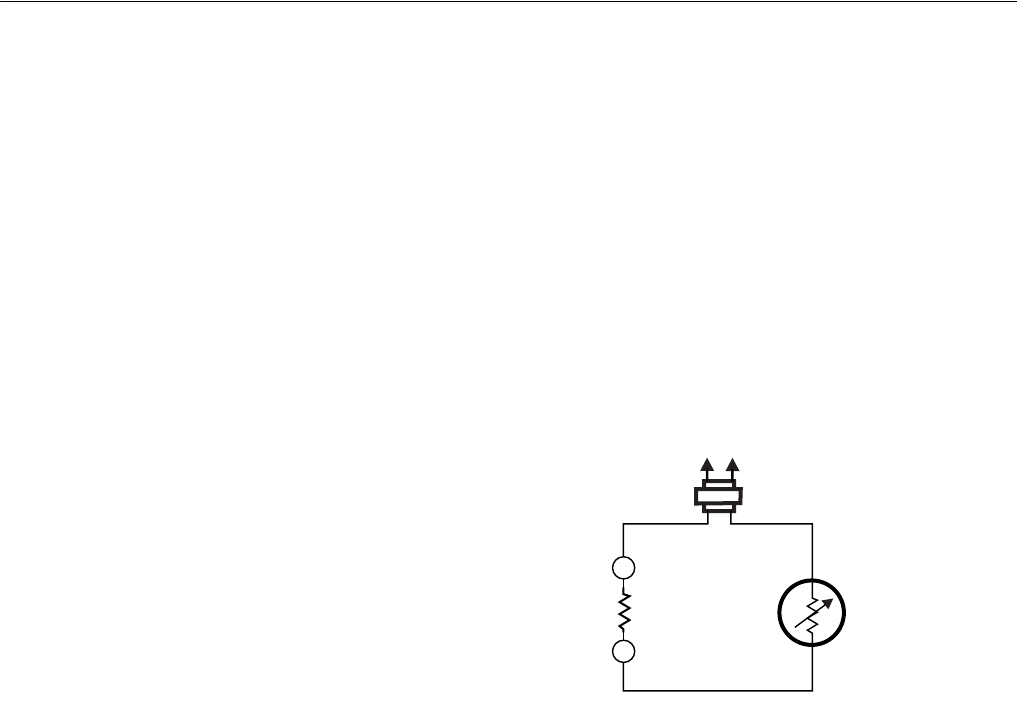
T874 MULTISTAGE THERMOSTATS AND Q674 SUBBASES
60-2485—8 24
one controlling the auxiliary heat) makes only when the heat
pump alone cannot handle the load. That is how the strategy
of using the most economical heat first is implemented.
Cycling Rate
Normally, thermostat anticipation is set to cycle a fossil fuel
furnace about five or six times an hour (at 50 percent load).
This provides a reasonable balance between comfort, stability
and economy.
A heat pump, being a mechanical refrigeration system, should
be cycled at a rate of 2-1/2 to 3 times an hour. With a T874,
this is accomplished by setting the anticipator at the total
current draw of the controlled device (the contactor and
possibly the changeover relay or valve). Most likely, the
compressor operates from the first stage of the thermostat.
The second stage normally controls the auxiliary heaters. This
heat anticipator can be set for the current draw of the electric
heat primary, and produces good control.
Voltage Anticipation
Although not a specific requirement for heat pumps, several
models of the T874 have voltage heat anticipation instead of
current anticipation.
With voltage anticipation, the amount of heat added to the
thermostat is constant no matter which load is connected to it.
The anticipator realizes a constant voltage and produces a
constant amount of heat during the ON cycle. This allows the
cycling rate to be designed into the thermostat. The heat
pump manufacturer is assured of correct performance
independent of later thermostat adjustments.
Outdoor Reset
Outdoor reset, which a C815A Outdoor Thermistor makes
possible, is sometimes applied in heat pump systems to help
minimize the effect of the differential between stages. It takes
2°F (1.1°C) change in temperature to bring on the second
stage and full heating. Added to a certain amount of droop
under high loads, there can be a large offset between the
setpoint and room temperature.
Without some method to counteract this situation, the
temperature offset from the setpoint could be as much as 6°F
(3.3°C) under high load conditions. It is not likely that the
occupants accept this variation without making frequent
thermostat setting changes.
Outdoor reset has the effect of raising the setpoint at cold
outdoor temperatures. Then, even with a few degrees droop,
the space temperature stays near the desired setting.
This is done by calibrating the thermostat high by 5°F (3°C)—
the amount of expected offset. This offset compensates for
differential and droop at high load factors so the thermostat
switches at the setpoint. At warm temperatures, heat is added
to the thermostat to compensate for this offset; at cold
temperatures, the extra heat is automatically removed. The
effect is the same as raising the setpoint as the outdoor
temperature goes down.
This is particularly important on the 3-stage T874. The
additional stage means that more droop is introduced when
the system is in operation. That is the reason the TRADELINE
T874W is sold in a package with the outdoor sensor and the
correct subbase.
Outdoor Reset—How it Works
The heater in the thermostat is connected in series with a
thermistor sensor that measures outdoor temperature. See
Fig. 34. In warm weather, the thermistor has very low
resistance, permitting a large current flow in the heater, which
generates a relatively large amount of heat in the thermostat.
In cold weather, the outdoor sensor has high resistance,
which results in low current flow and little or no heat being
added to the thermostat. This raises the control point,
overcoming the effects of droop and interstage differential.
Fig. 34. Location of thermistor.
Changeover
Changeover between heating and cooing can be
accomplished either automatically or manually, depending on
the application. Changeover can occur in heating or cooling.
The changeover valve is energized as long as the subbase
function switch is in the appropriate position when manual
changeover is used. If a system manually changes over on
cooling, the valve energizes whenever the subbase switch is
in the cooling mode.
One of the mercury bulb switches is used for control when the
thermostat has automatic changeover. When the automatic
changeover is in cooling, the changeover valve is energized
when the first stage cooling switch makes. The second stage
switch turns on the compressor.
It is more common with new equipment to find that
changeover occurs with cooling; that is, the changeover valve
is energized to produce cooling.
Whether automatic or manual changeover is used and
whether the reversing valve is energized with cooling or with
heating, a heat pump system can be controlled by the
appropriate T874 Multistage Thermostat.
L1
(HOT)
L2
RESET
HEATER
C815A
OUTDOOR
THERMISTO
R
SENSOR
M582
6



